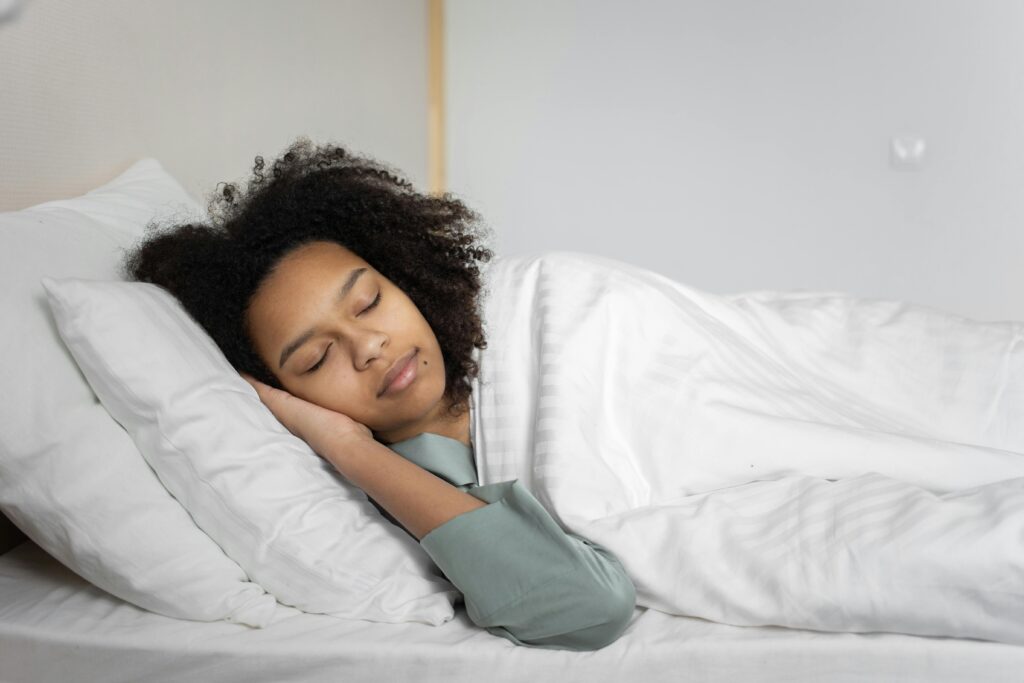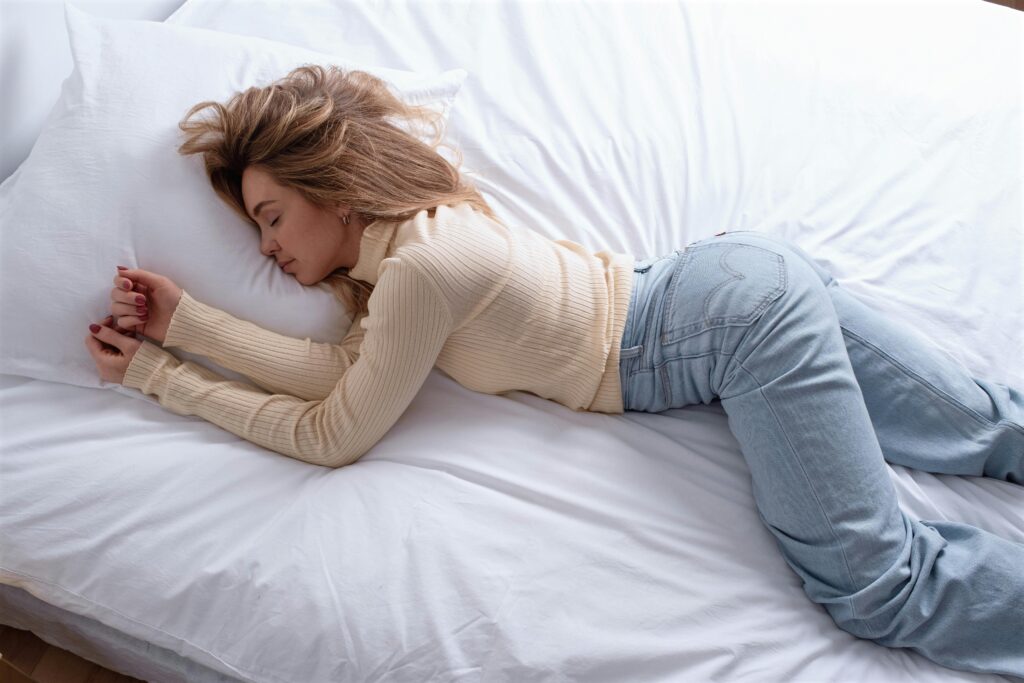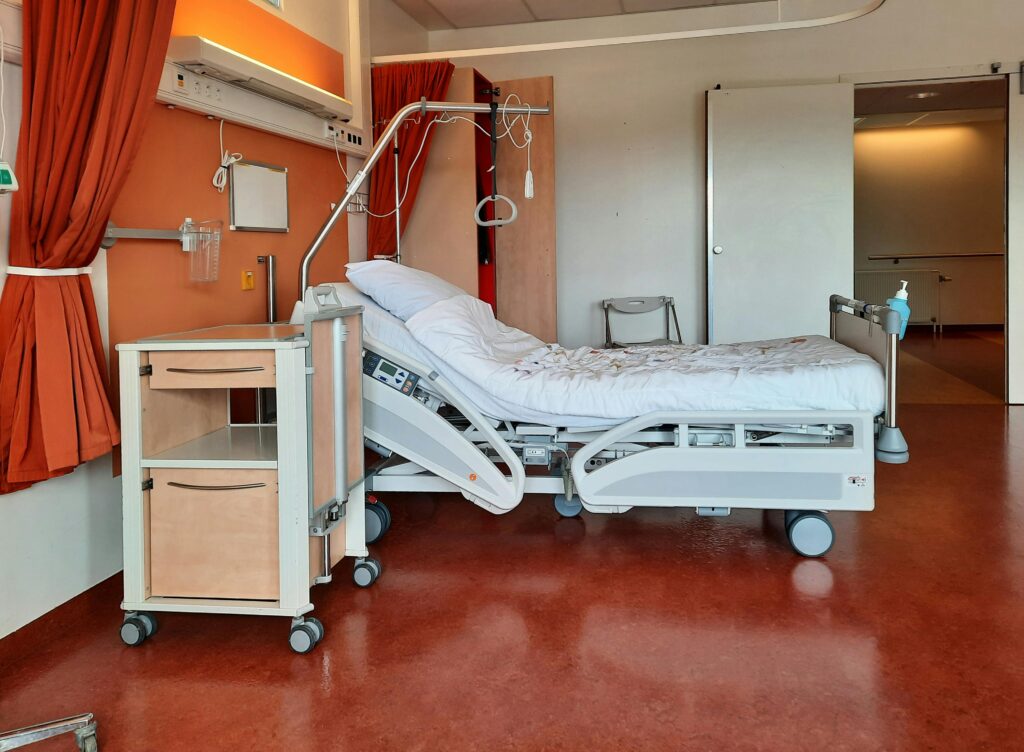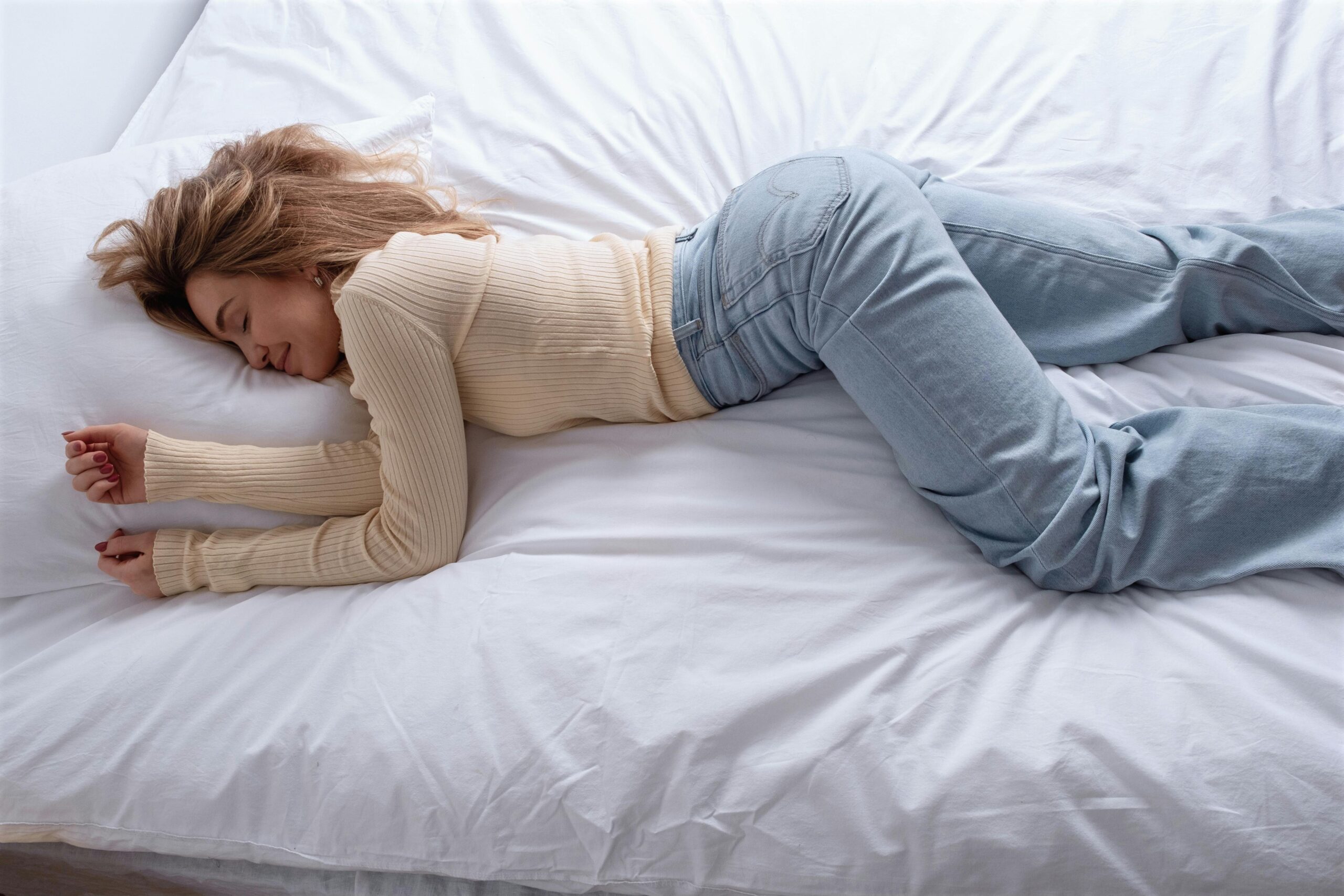Sleeping with lower back pain can be challenging, but several strategies and positions may help alleviate discomfort and improve the quality of sleep. Here’s a detailed guide to How To Sleep With Lower Back Pain In 2024:

1. Optimal Sleeping Positions.
Different sleeping positions can either reduce or exacerbate back pain. Here are the best positions to consider:
- On Your Back (with Pillow Support):
Lying on your back is generally considered one of the best positions for relieving back pain as it evenly distributes weight and minimizes pressure points.- Place a pillow under your knees: This helps maintain the natural curve of your lower back and reduces stress on your spine.
- Use a supportive pillow for your head and neck: Ensure your head is in alignment with your spine.
- On Your Side (with Pillow Between Knees):
For side sleepers, this position helps reduce strain on the spine.- Place a firm pillow between your knees: This keeps your hips, pelvis, and spine aligned. Without the pillow, the top leg may pull on the spine, exacerbating pain.
- Keep your knees slightly bent, but not curled too tightly into the fetal position: Overly curled positions can flatten the natural curvature of your back.
- Fetal Position (for Herniated Discs):
Sleeping curled up on your side in a fetal position can help with certain conditions like a herniated disc.- Pull your knees toward your chest and curl your torso: This opens up space between vertebrae, potentially easing pressure on discs.
- Switch sides regularly: If you sleep on the same side all night, it could lead to muscle imbalance or pain on that side.
- On Your Stomach (with Pillow Under Hips):
While sleeping on your stomach is generally not recommended for those with back pain (as it can flatten the spine’s natural curve), some people find it comfortable if done correctly.- Place a pillow under your lower abdomen and hips: This helps reduce stress on the lower back and ensures the spine stays aligned.

2. Use the Right Mattress.
- Medium-firm mattresses are usually the best option for those with lower back pain, as they provide a balance of support and comfort. A mattress that’s too soft can cause your spine to sink, leading to misalignment, while one that is too firm can cause excessive pressure points.
- Consider a memory foam or latex mattress: These materials can contour the body and relieve pressure on painful areas.

3. Adjustable Beds.
An adjustable bed that allows you to elevate both your head and legs can be beneficial for lower back pain. It reduces pressure on the spine and can provide a customized sleeping position that’s more comfortable.

4. Use Proper Pillow Support.
- For Back Sleepers: A thin pillow or a cervical pillow that supports the natural curve of your neck can be helpful. Avoid pillows that are too high, as they can push the head forward, straining the neck and back.
- For Side Sleepers: A firmer pillow is often best, ensuring your head is level with your spine.
- For Stomach Sleepers (if necessary): Use a very thin pillow for the head or none at all, but place a small pillow under your hips to maintain spinal alignment.

5. Stretch Before Bed.
Gentle stretching before going to bed can help relieve tension in the lower back and promote relaxation. Focus on stretching the hamstrings, hips, and lower back. Try these stretches:
- Child’s pose: A yoga stretch that helps lengthen the spine.
- Knee-to-chest stretch: Lying on your back, pull one knee at a time toward your chest, holding it for 20-30 seconds.
- Piriformis stretch: Cross one leg over the other and gently pull the crossed knee toward your chest.

6. Consider Heat Therapy Before Sleep.
Applying a heating pad to your lower back for 15-20 minutes before bed can help relax tight muscles and reduce pain. The warmth increases blood flow and promotes healing, which can ease discomfort.

7. Maintain a Consistent Sleep Schedule.
Poor sleep hygiene, such as irregular sleep times or insufficient rest, can exacerbate back pain. Try to go to bed and wake up at the same time every day to maintain a consistent routine, which can also help with pain management.

How To Sleep With Lower Back Pain In 2024
8. Sleep Aids and Devices.
- Lumbar support cushions: Some people benefit from placing a small, firm cushion or rolled-up towel under their lower back for extra support.
- Body pillows: These long pillows can support the entire body when sleeping on your side, ensuring your spine stays in alignment.

9. Lifestyle Considerations.
- Weight management: Excess body weight can strain the lower back. Maintaining a healthy weight reduces this pressure, which can alleviate pain.
- Exercise: Strengthening the core muscles (abdomen, back, and hips) can help support the spine and reduce lower back pain over time.
- Avoid prolonged sitting or poor posture during the day: These can exacerbate lower back issues, so it’s important to move regularly and maintain proper posture.

10. Medications or Supplements.
- Over-the-counter pain relief: Non-steroidal anti-inflammatory drugs (NSAIDs) like ibuprofen can help reduce inflammation and pain in the lower back.
- Muscle relaxants: In cases of muscle spasms, your doctor may recommend a short course of muscle relaxants.
- Supplements: Some people find relief with magnesium supplements, as magnesium helps relax muscles and reduce cramps or tension.

When to Seek Medical Attention:
If your lower back pain persists despite trying these techniques or worsens, it may be a sign of a more serious condition such as a herniated disc, spinal stenosis, or sciatica. If pain is accompanied by symptoms such as numbness, tingling, or weakness in the legs, consult a healthcare professional.
Implementing these tips can significantly improve sleep quality and reduce lower back pain. Everyone’s body is different, so it may take some trial and error to find the best combination of sleeping positions, pillows, and support for your situation.

Can A Man Love A Woman without Sleeping With Her

How Many Hours Of Sleep Do Women Need 2024



3 thoughts on “How To Sleep With Lower Back Pain”